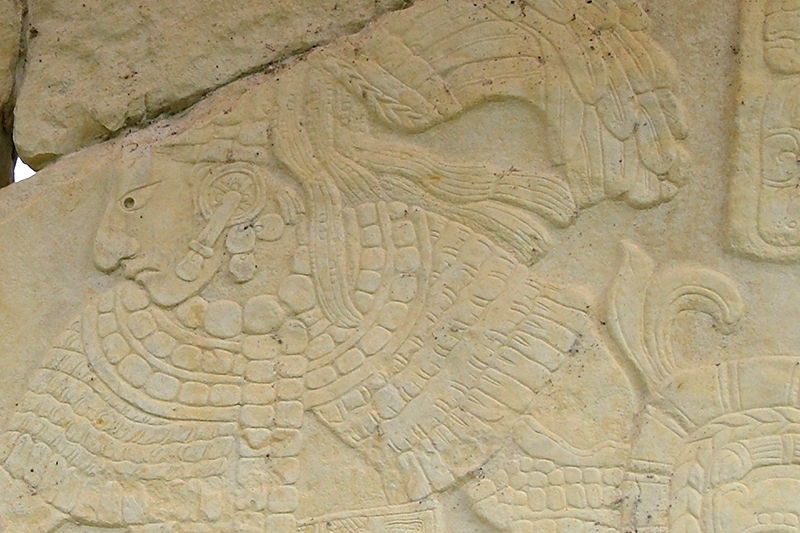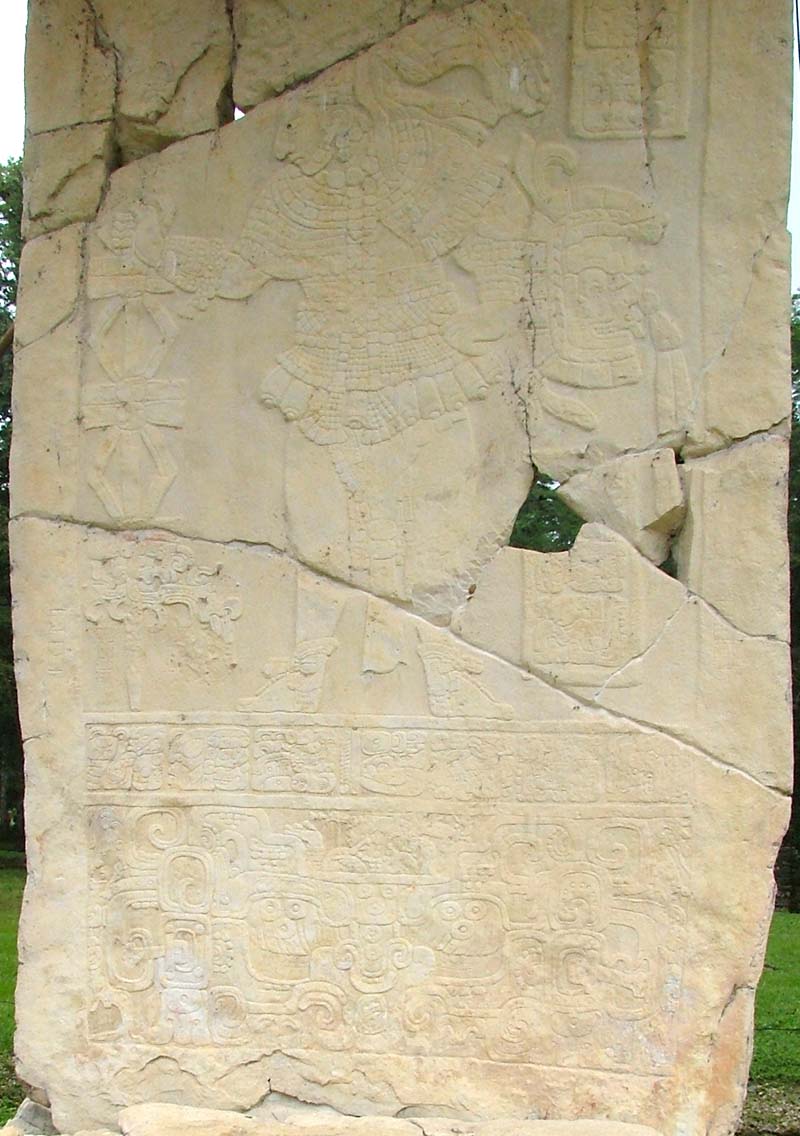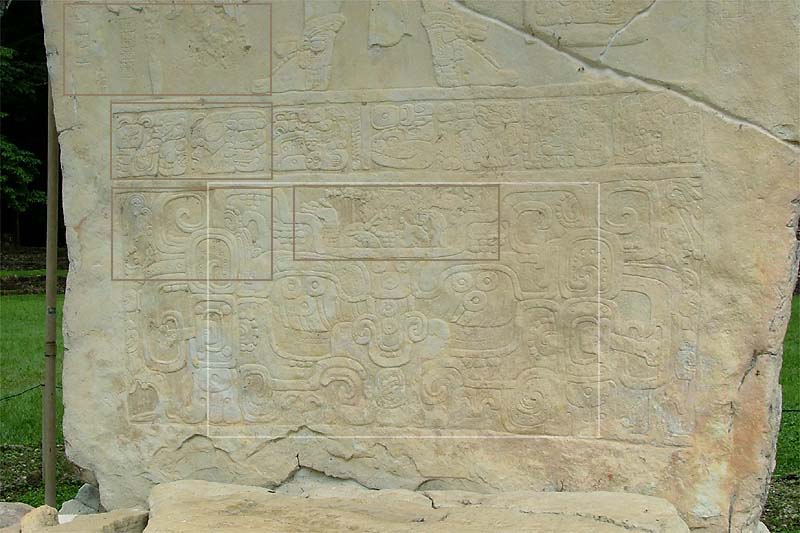

The giant Stela 1, almost 20 feet in height, is one of the tallest in the Mayan world and a true tour de force given the difficulty of hewing a stone slab of that size without fracturing it.
For scale, take a look at the tiny figure to the side of the stela.

Chaan Muan's constume must have been extraordinary, and extraordinarily colorful, with a cape of jade and feathers, and the blue-green quetzal feathers of his headress.
Bonampak's Stela 1 represents the ruler Chaan Muan II at the height of his reign as he celebrates a calendar-ending period in AD 780. Chan Muan is also believed to be the protagonist portrayed in the murals as well as the subject of Stelae 2 and 3 which flank the acropolis stairway.

The importance of this lord is expressed in the way he is portrayed and the difficulty of hewing a monument of this size from a thin stone slab without fracturing. Given its height of almost 20 feet, Stela 1 is one of the loftiest in the Mayan world.
INAH Sign at Site
Merle Green writes: "In falling, Stela 1 broke into about eight pieces, of which this is the largest. Unfortunately the top fragment fell face up and the rains of a millennium have eroded the rest of the headdress."
Ancient Maya Relief Sculpture: Rubbings by Merle Greene. The Museum of Primitive Art. New York, 1967

Photo courtesy of Paul Tanner. Thank you Paul!
This photo show how Stela 1, still in fragments, looked in 1971 before restoration was begun. This fragment had fallen face down, which accounts for its excellent state of preservation when it was found. This was long before tourism had developed in the area.
At that time, there were no roads to Bonampak. Paul Tanner writes: "In 1971 the only practical way in was by light aircraft and this hadn't figured in my travel plans. However, when, whilst sitting in a café in San Cristobal del las Casas, I was invited by some Germans driving around Mexico to chip in towards the cost of a flight ot Bonampak, it seemed a worthwhile opportunity."

Chaan Muan's proud demeanor clearly signals an aristocratic personage. He is shown standing with a ceremonial staff in his right hand and a shield with feathers by his left forearm.
Merle Greene compares him to "some belted earl with his fringe of oliva shells encircling his wasp waist."
Ancient Maya Relief Sculpture: Rubbings by Merle Greene. The Museum of Primitive Art. New York, 1967

At the bottom of the Stele you see an earth monster holding up the ruler (white rectangle: note eyes with half-closed eyelids, muzzle, mouth, and ear ornaments). From the cleft in the earth monsters forehead and on each side of his face the young corn god emerges. Hyeroglyphics on a band under Chaan Muan II's feet refer to his name glyph and geneology.
The artist who carved this stela actually signed his work to the left of the tip of Chan Maun II's staff. This signature associates the artist with the neighboring city-state of Yaxchilan. Bonampak had long been a vassel state of Yaxchilan (since around 600 AD), and Chaan Muan II was married to the sister of Shield Jaguar, the ruler of Yaxchilan.
There is speculation that Chaan Muan might have actually been installed as ruler of Bonampak under the auspices of Shield Jaguar.